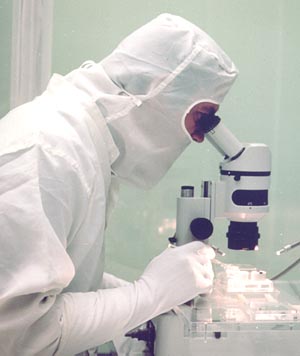Scientists make use of square microbes
 A team of Australian scientists headed by Mike Dyall-Smith (Melbourne) has succeeded in cultivating unique bacteria with rectangular and square shaped cells.
A team of Australian scientists headed by Mike Dyall-Smith (Melbourne) has succeeded in cultivating unique bacteria with rectangular and square shaped cells.

Majority of bacteria cells are spherical or rod-like in appearance. However, microbes that have cells with right angles aren't exactly bacteria. They belong to a very old, recently found form of life. They are the so-called "Walsby's square bacteria", named after Anthony Walsby, a British microbiologist who had first discovered them in a hypersaline pond near the Red Sea in 1980.
These creatures belong to the most general type of cells found in saline lakes. There, they connect with one another thus forming a two-dimensional mosaic. This effect in turn is responsible for the lake’s distinctive pink color.
Dyall-Smith has told that the microbes were very hard to cultivate, since they seem to "dislike" agarous gel which is usually used for bacterial cells' cultivation in labs. Instead, the culture needs to be hypersaline: at least 18% salt, which is roughly the same concentration as in soy sauce.
According to him, successful isolation and cultivation of square bacteria is a very important step in understanding the role they play in saline lakes' ecosystems.
It was also discovered that the microbe is also extremely tolerant to magnesium chloride. This makes it the perfect organism for studying what life might be like in extraterrestrial corners of the solar system, such as the magnesium-rich brines on Jupiter's moons Europa and Ganymede.
Subscribe to Pravda.Ru Telegram channel, Facebook, RSS!


